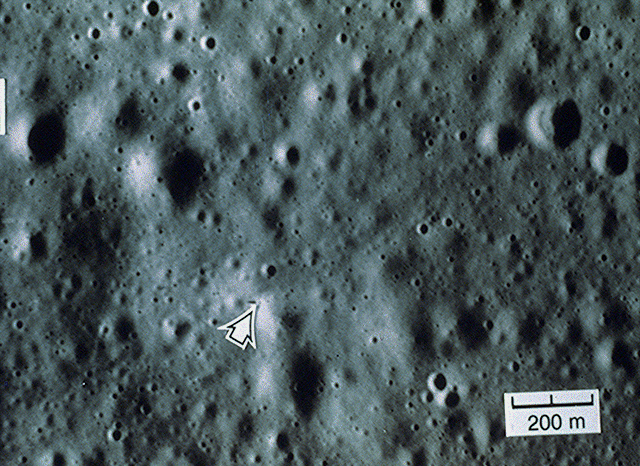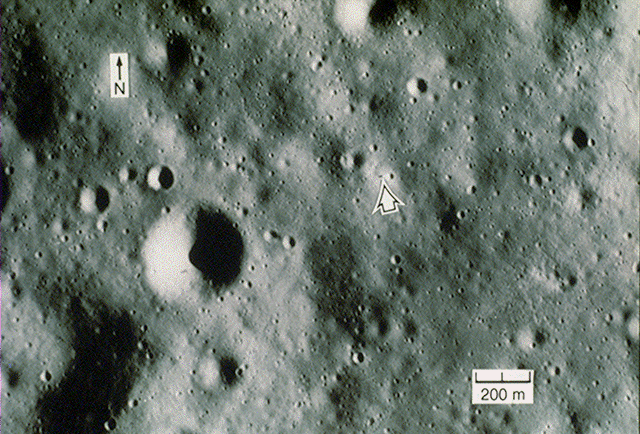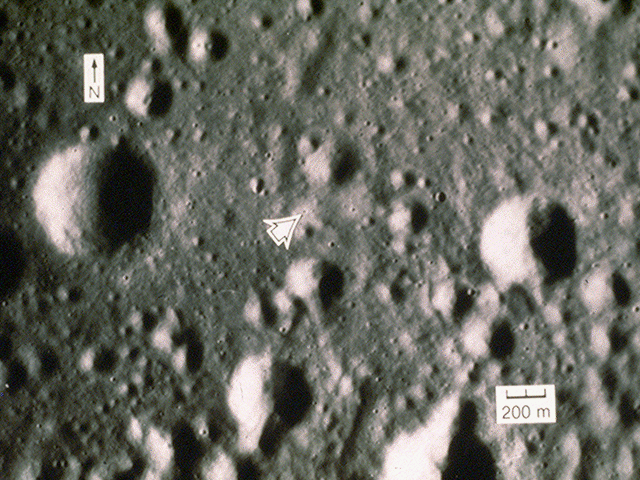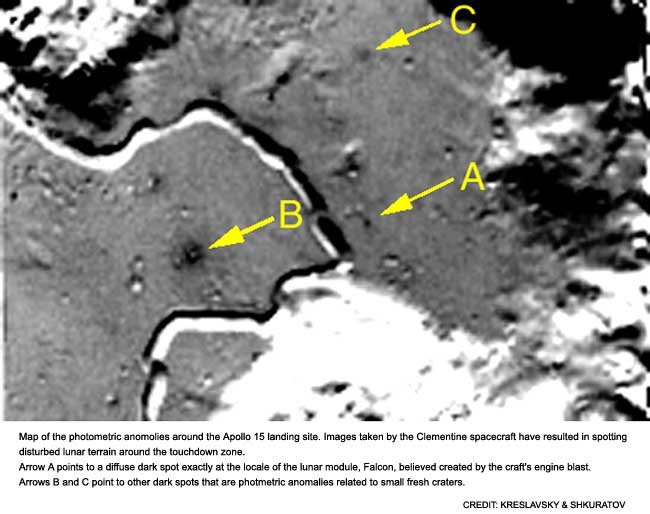An infrared image taken by one of the the European Very Large Telescopes in Chile, which has 8.2-meter mirror, shows some of the finest detail observed from the Earth. At the ESO Press Release page , you can see images with an angular resolution of about 0.07 arcsec; they show details as small as 130 meters across. Still a lot larger than the lunar lander....
Is it possible that a lunar lander might cast a shadow long enough to be detected from the Earth? Well, possibly -- but I doubt it very much. We do have pictures of the shadows cast by lunar landers, taken by several spacecraft which were all in orbit around the Moon -- the Apollo command and service module (CSM), the Clementine probe, the Lunar Reconnaissance Orbiter (LRO). as it orbited the Moon. You can see for yourself that the shadows are very inconspicuous. In order for a ground-based telescope to see the shadows, it would have to be able to take pictures showing details as small as those visible in these pictures taken from lunar orbit. I don't know of any such Earth-based pictures.
Pictures taken from Apollo modules
Alex R. Blackwell, of the University of Hawaii, provided pointers to three photographs taken by Apollo astronauts, in a posting to sci.astro on Jan 3, 2001. He wrote:
The only relevant imagery I could find on a NASA website of the Apollo landing sites and hardware are the following: Apollo 15 site: High resolution vertical view http://www.lpi.usra.edu/images/sapo/sapo_S24.gif The caption reads "The Lunar Module casts a distinct shadow on the mare surface. (NASA photograph AS15-9377[P])"

Apollo 16 site: High resolution vertical view http://www.lpi.usra.edu/images/sapo/sapo_S30.gif The caption reads "The Lunar Module casts a distinct shadow on the Cayley Plains. The landing site is about 500 meters east of the rim of Spook Crater, which was visited by the crew during the first EVA. (NASA photograph AS16-4558[P])"

Apollo 17 site: Enlargement of high resolution view http://www.lpi.usra.edu/images/sapo/sapo_S36.gif The caption reads "The Lunar Module landed on the Taurus-Littrow valley floor among several 100-meter-sized craters. The first EVA included setting up the ALSEP station and an investigation of Steno Crater (the largest crater on the lower margin). The second EVA included traverses along the southern rim of Camelot Crater (large crater left of the landing site). (NASA photograph AS17-2309[P])"

I would presume that these images are from the respective CSM SIM bay panoramic cameras.
Picture taken by Clementine orbiter
In an article on space.com , written by Leonard David, 27 April 2001, there is a picture taken by the Clementine lunar probe which shows evidence for the Apollo 15 landing site. The evidence was noticed by Misha Kreslavsky, of the Department of Geological Sciences at Brown University, and Yuri Shkuratov of the Kharkov Astronomical Observatory in the Ukraine.

Last modified July 17, 2009, by Michael Richmond.